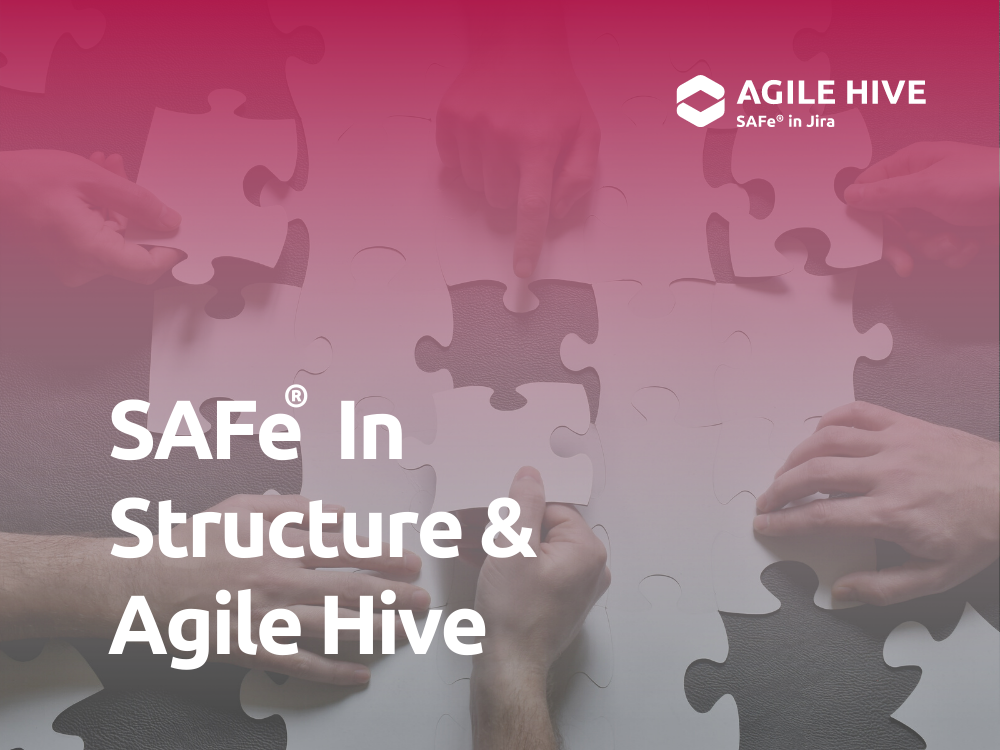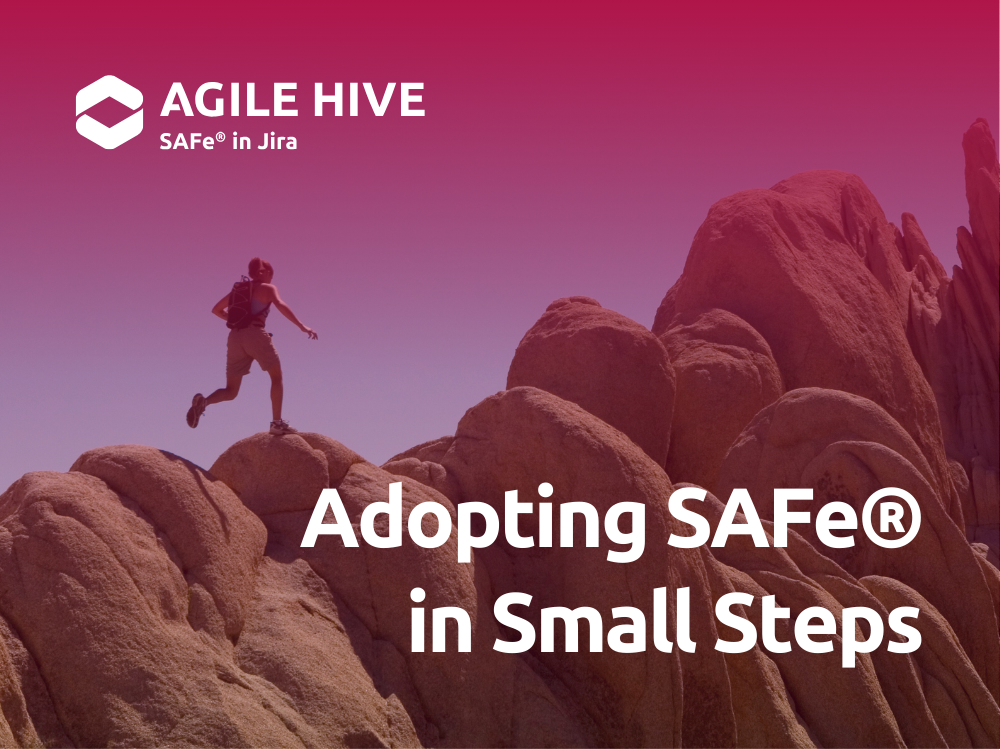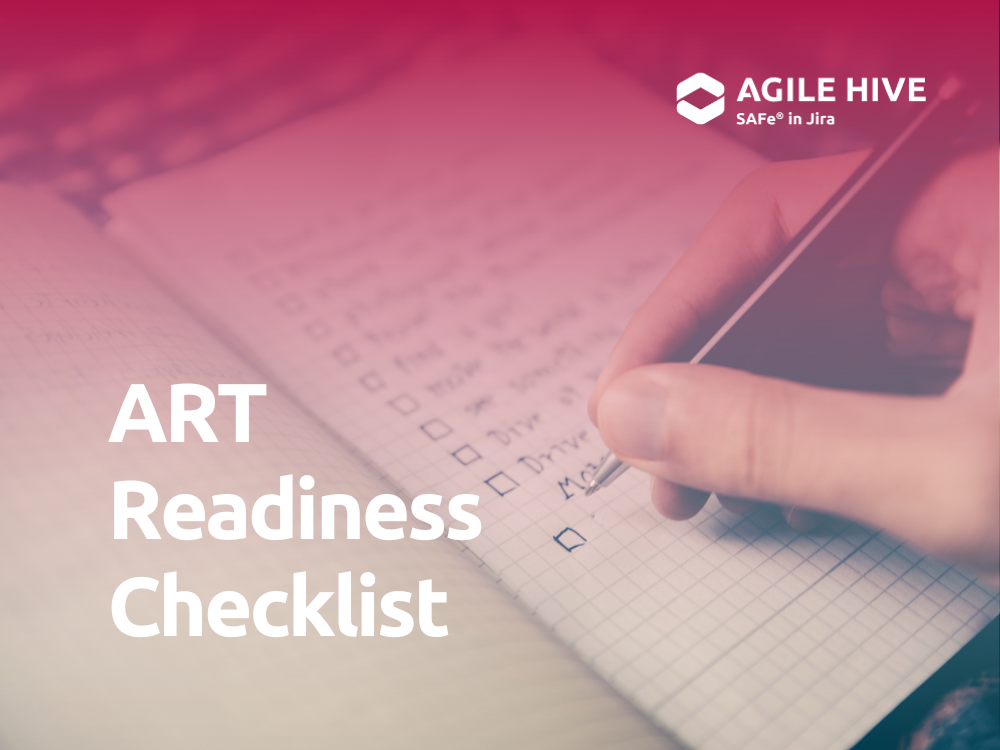The Responsibilities and Collaborations of Product Management (PM)
According to Scaled Agile Framework (SAFe®) 6.0, the responsibilities of Product Management (PM) are summarized in the following graphic:

In addition, SAFe® identifies the Key Collaborations of Product Management in this graphic:
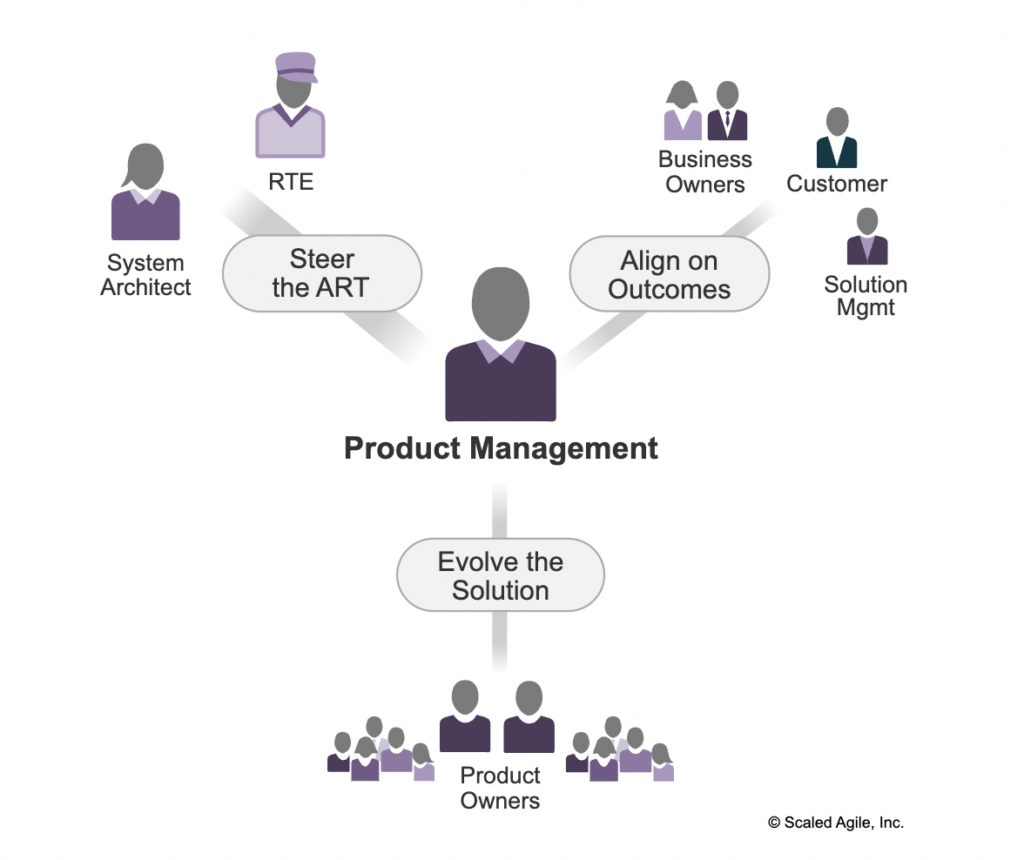
This article articulates the details of these responsibilities and collaborations in SAFe® 6.0. We will examine these, with an explanation of how Agile Hive supports and enables Product Management. This allows a PM to accomplish these responsibilities in the most impactful way possible.
Our Example System
HiveFlier Inc., our fictional enterprise, is a company that builds personal aircraft. Our Agile Release Train (ART), we call FlyByHive, builds and maintains the navigation system for the personal aircraft. The ART is adopting agile and SAFe® practices, and is preparing for their first Planning Interval, PI1. Agile Hive supports Pam in her role as Product Manager for each of the responsibilities and collaborations articulated by SAFe®.
Leverage a Single Source of Truth for the Agile Release Train (ART)
For each of the responsibilities and collaborations articulated for PM, there is one consistent efficiency multiplier. This efficiency multiplier is a single source of truth (SSOT) for the artifacts – directly called out as part of SAFe® – as well as supporting any related information and artifacts. These are key for the core values of transparency and alignment.
Note that these two core values have not changed since the inception of SAFe®. In version 6.0, these core values are now also part of the 4 Core Values. This includes Respect for People and Relentless Improvement. Built-in Quality and Program Execution have not gone away; they have been allocated to more appropriate areas of the framework.
What Is Agile Hive?
Agile Hive was born from the need to have an intuitive add-in to Jira to support SAFe®, at any and all levels of scaling. In the sections below, we highlight how Agile Hive helps with specific responsibilities and collaborations. We have highlighted key elements to keep this article at a manageable length. Agile Hive supports all the details provided in this article in some way.
Delivering Value
The guidance in SAFe® says that PM delivers value “whenever customer needs are in balance with the goals of the enterprise”. Discovery of needs and goals, communicating and aligning them, and helping ensure that the value delivered is on target together represent the heart of the PM role. Leveraging the SSOT of Agile Hive is an efficient and impactful way to manage the various perspectives, agreements, and insights.
HiveFlier articulates their business needs as Strategic Themes at the Portfolio Level. In order to define, prioritize, and help steer the work of the FlyByHive ART, Pam must be able to connect the work of the ART to the Strategic Themes.
Our Agile Hive setup includes an issue type for capturing a Strategic Theme, as well as the ability to link the Strategic Theme to the work that supports it. We added this customization, a very easy administrative function. Here is a Strategic Theme for HiveFlier Inc. related to customer growth within a specific time frame. You can see in the Issue Links section, that there are two Features and one Enabler in the FlyByHive ART that are supporting this theme.

From the FLYB-1 issue view, she would also see that the strategic theme is listed as “belongs to Theme” of this Feature.
Pam can also view an Issue Table for the ART and see which strategic Themes a particular Feature supports. Here she hovers over the link for PORTFOLIO-34 to see the Strategic Theme that the FLYB-3 Feature supports.

The Empathy Map
Discovering and communicating customer needs can simply be capturing that information in the Features of the ART, or can be more extensive with the use of Design Thinking tools. In order to make the Enabler for Study Production and Services Issues compelling to the Business Owners, she created an Empathy Map for the Production Supervisor.
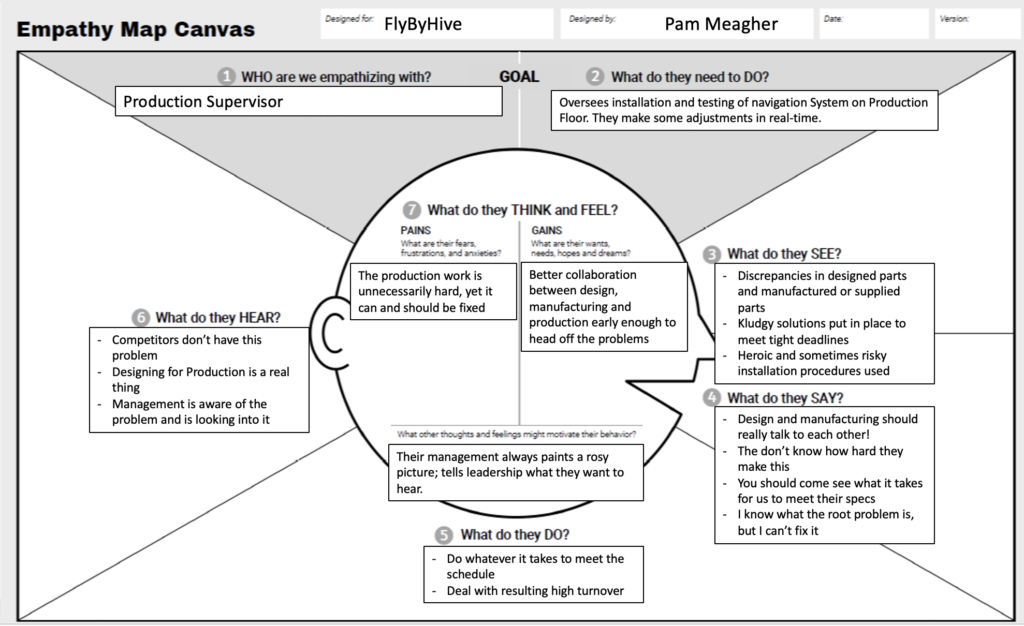
This Empathy Map will help the discussions around prioritization of the Enabler compared to customer-facing Features. Additionally, by making this information transparent, the designers and developers of the systems are inspired to innovate and experiment on what is possible, in order to achieve the customer goals and enterprise objectives. When Pam connects this information to the relevant Enabler, the information is easy to find in the context of the Enabler and the decisions people need to make regarding when and how to implement that Enabler.
Agile Hive and Confluence can integrate with the Enabler to connect the Empathy Map and other design thinking tools. This technique is useful to provide a template for this kind of information. An alternative is to attach the file with the Empathy Map directly to the Enabler record.
Exploring Markets and Users
The PM must also understand market dynamics and user preferences. Capturing the research and information into a SSOT helps tie the “whys” of the market and customers to the “what” of the system Features.
Pam captures the vision for this Planning Interval (PI) as a guiding “north star” of the “why” of this release. The stakeholders and implementers can readily access and reference the vision she presents in the PI Planning by using the Objective issue type.
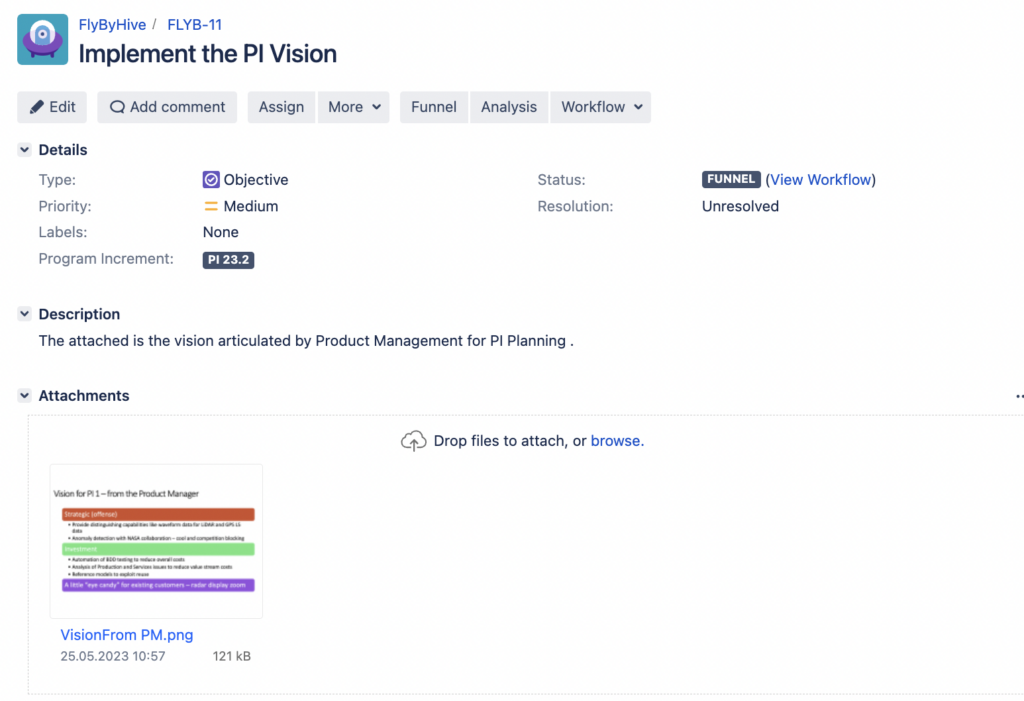
The PM seeks balance between serving existing customers and reaching out to new customers and markets. In addition, the PM identifies market rhythms and events which guide the “when” of system delivery. Capturing Milestones on Roadmaps and PI Plans help the ART members understand the balance of timing and capability delivery.
Pam knows from the Business Owners that the Hartford Airshow is a key milestone for the ART. She captures a Milestone issue type:
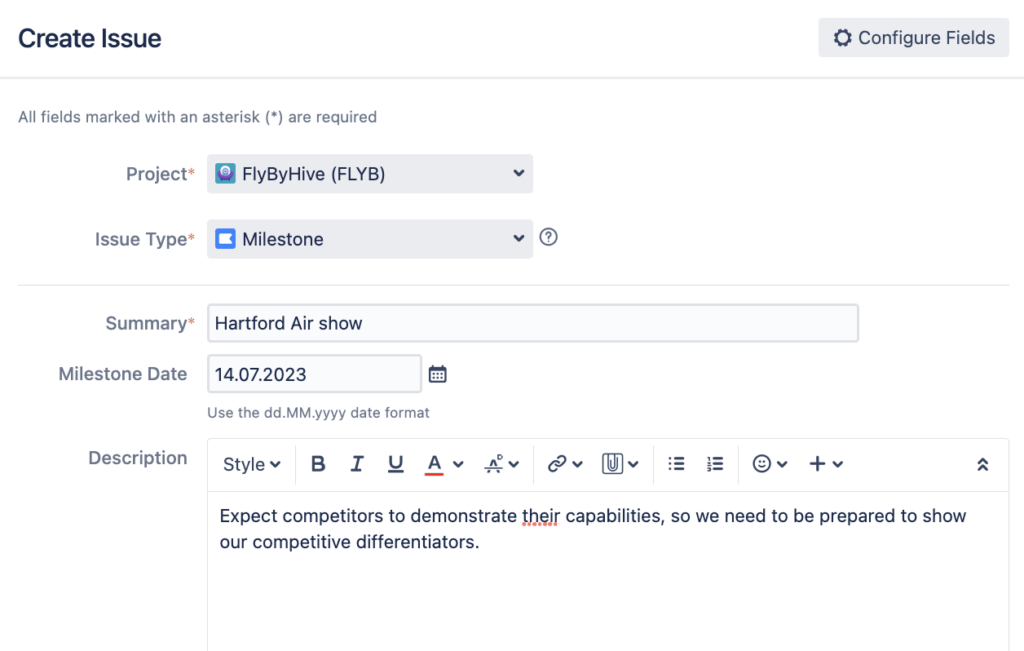
Pam links the milestone to the relevant features and shows it on the ART/Program Roadmap as well:
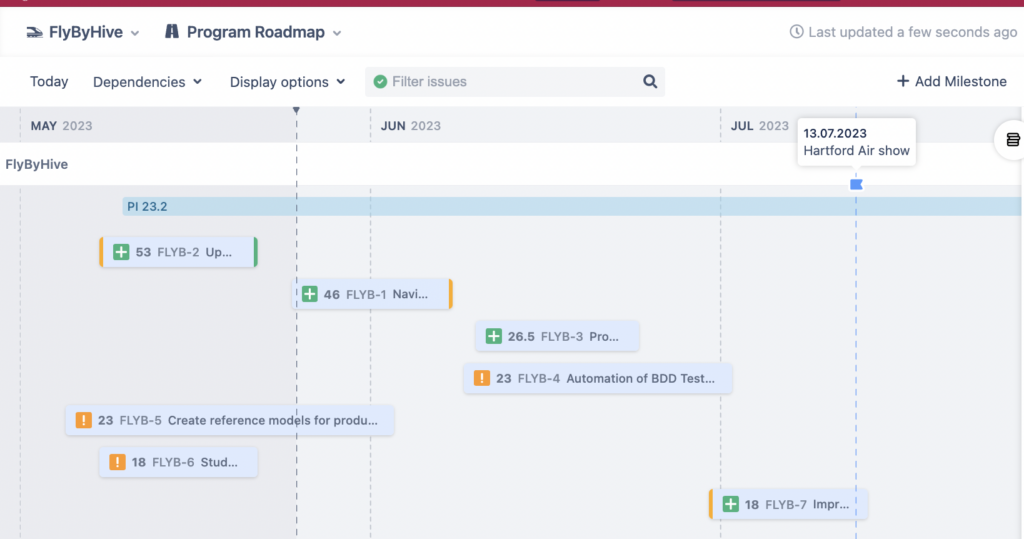
We have shown two of the ways Pam leverages Agile Hive to represent her exploration of markets and users, then connecting that information to the work to be performed.
Managing and Prioritizing the ART Backlog
The ART Backlog is a central artifact of communication from the Product Management on the Features customers need or desire that will deliver value from the ART. Therefore, the PM’s ability to articulate, prioritize, and accept the Features in the Backlog is essential to timely and efficient delivery of customer and enterprise value.
The transparency of the ART Backlog in Agile Hive is its real super-power. This is not a throw-it-over-the-fence list of work to do. In fact, the conversations, collaboration, and alignment are keys to success in delivering the right value and at the right time. The Weighted Shortest Job First (WSJF) technique is a powerful way to get the right conversations and alignment across stakeholders. Agile Hive gives the transparency to help ensure aligned prioritization.
Here we see the FlyByHive ART backlog with the components and calculations of WSJF. Most Agile tools, even an Excel spreadsheet, can show you that.

Agile Hive gives you the connected information, like ties to Strategic Themes, dependencies between Features, and User Context – all examples shown already.
With respect to WSJF, just having the pure number values is of marginal value without some understanding of why these relative values were chosen. A Confluence Page attached to the Feature or Enabler easily captures the details of the WSJF value discussions, as in this example:

We see an anti-pattern when the ART’s work is only voiced in meetings and not captured well in the SSOT. This anti-pattern leads to confusion, inefficiency, and frustration. Leveraging the SSOT in Agile Hive is the key to successful alignment across the ART. The example of WSJF value discussions is just one of many examples of how the SSOT can prevent the need for hunting through meeting minutes, or worse, ignoring them!
Connecting with the Customer
The PM “engages directly with customers throughout the product life cycle.” (Quote from SAFe®) The PM negotiates the tensions and opportunities across competing points-of-view. For example, perspectives may differ between internal and external customers; pressure may come from very vocal but not necessarily representative customers; and the information coming into product delivery from the support and consulting organizations may be incongruent. It’s a tough job!
The PM must coalesce all these viewpoints into a prioritized backlog so that value can be delivered. Just capturing the “what” of Features in a tool is a missed opportunity to rally together all the members of the ART around the “why” and “when” elements of the work. This is where Agile Hive as a SSOT helps stimulate collective ownership through transparency. Excellence in the PM role is a combination of skills of the PM supported by effective communication in the SSOT.
Here is an example of some details in one of the Features for FlyByHive. The Benefit Hypothesis articulates the value, therefore the “why” of the Feature while the Acceptance Criteria provide more detail on exactly what the customer would expect. A team member added a comment to start a conversation about the assumed knowledge of the customer. This could have come from a team conversation or a session with representative customers.

The benefit of having this in Agile Hive as the SSOT is 1) it is kept in the context of the Feature and not lost in meeting minutes or group chats and 2) it allows asynchronous interaction modes, for example, with team members in different timezones, thus providing better flow efficiency.
Defining Product Strategy, Vision and Roadmaps
In the “Delivering Value” section, we showed how the Product Manager Pam connects Features to Strategic Themes.
We described in the previous section “Exploring Markets and Users” how Pam captured the Product Vision from PI Planning into Agile Hive for easy reference. We also saw the ART/Program Roadmap with a milestone added.
“Product Management plays an integral role in bridging portfolio strategy and execution.” (Quote from SAFe® product-management article). You could say that this is how the PM serves the internal customer that is the enterprise. We already addressed the need for balance between serving internal and external customers. The organization keeps focused on the delivery of value by capturing and communicating the higher-level “why” and “when” of the value. As markets, technologies, people in roles, non-people resources, and all the myriad of moving parts change during the work of delivering value, the product strategy, vision, and roadmaps help keep the ART moving toward delivery of the right value in the right way. Connecting the dots for all the stakeholders of the work of the ART is a critical success factor and is the responsibility of the PM.
Working In Harmony
This responsibility of the PM called “Defining Product Strategy, Vision and Roadmaps” is not just capturing these items independent of one another, but also ensuring that they are working in harmony. Given the Product Strategy, are the right Features that will achieve that Strategy captured and understood? Is a specific Feature, given its priority relative to the other Features, represented in the appropriate time frame in the Roadmap? Does the Vision for the current PI help ensure successful achievement of the Product Strategy?
We see an anti-pattern when non-connected tools like PowerPoint and Excel capture these artifacts, store them in non-intuitive locations to the Product space, and make it harder to access. The artifacts devolve into “something we needed to create” rather than valuable information that works together for the best outcomes.
Agile Hive is a critical success tool as a “digital assistant” to the PM function for capturing, connecting, and communicating these elements.
Key Collaborations
As depicted in the second graphic in this article, there are three key types of collaborative partnerships the PM function “maintains to enable quick and efficient product development flow.” In this section, we describe how Agile Hive supports these key collaborations.
Partnering with Customers, Business Owners, and Solution Management to Align on Outcomes
In FlyByHive as they plan this PI, the Displays team needs data from the LiDAR team early in the PI so the Displays team can design a consistent user experience for different types of data – LiDAR and GPS data for example. The subject matter experts on LiDAR, GPS, and RADAR are all different customer representatives.
The Team Breakouts boards in Agile Hive provide visibility into risky dependencies, as shown here. This enables the PM, Customer Reps, and Business Owners to have the conversation about the most effective approach while they are in PI Planning together. This is a proactive rather than reactive approach that enables better outcomes.
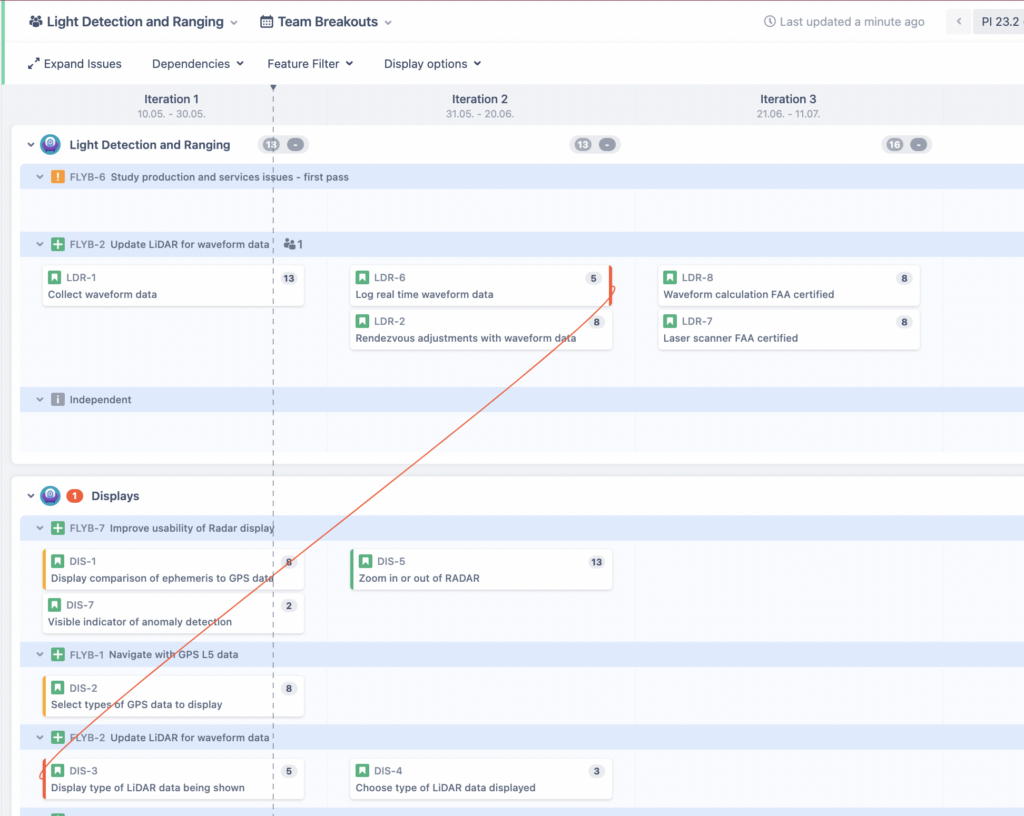
When changes happen during PI execution for example, if the Feature for FAA certification of the LiDAR waveform calculation is stalled, rallying the right people around the transparency in Agile Hive expedites the conversations and decisions needed to react quickly.
Great Product Management drives outcomes and delivers value, and that is real magic. This is not a one-and-done effort in preparation for each Planning Interval. Rather, this is continually helping define and refine Features as well as system demos, and gathering the right feedback to ensure amazing outcomes.
Agile Hive helps capture and communicate the elements of what amazing outcomes will look like, as well as how the implementation will create them. Critical thinking and analysis from Product Management is the first step. Communicating it for transparency and collective ownership is equally important. Without the communication and transparency required, and that Agile Hive provides, the best ideas of Product Management risk never making it to the outcomes.
Partnering with the System Architect and RTE to Steer the ART
While Product Management represents the needs of internal and external customers, and the Release Train Engineer (RTE) helps facilitate and coach the success of the ART toward those outcomes, the System Architect is responsible for defining and protecting the technical integrity of how the underlying solution works. In a complex system, as represented in our example FlyByHive, the harmony between how the user uses the system and how the “under the hood” product is designed and works is critical to balancing needs at all levels. A successful technique used to capture usage and implementation information is the use of graphical models.
The System Architect created a simple model of how navigation works in FlyByHive:

The System Architect and PM work together to update this model for the addition of GPS L5 data:
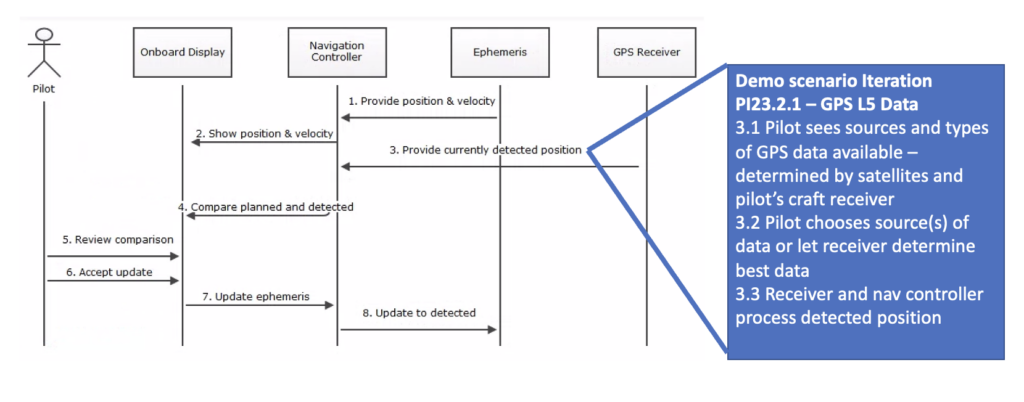
This viewpoint is valuable for
- Identifying the work (e.g. Stories) each team needs to supply in the PI
- Identifying changes from previous versions of the system
- Describing the steps of the System Demo for the relevant iterations and for the PI
Where You’re At, Where You Want To Go, How To Get There
The act of steering is most effectively achieved when there is a view of where you are, where you intend to go, and how you will get there. With an ART of 50-125 people, the single source of information on these aspects is critical to keeping all of the efforts moving efficiently in the same direction. The ART Roadmap and PI Plan provide the highest level view of where the ART is going. The Features describe the details of the value to be delivered. The ART Planning Board, ART Reports and Progress, along with details of how the teams will provide the Features in iterations with User Stories, all represent how the ART will get to the delivered value.
A critical part of steering is reacting to change along the route. The collaboration between the PM, System Architect, and the RTE will rely on the understanding of the impact of a change, each from their own responsibility perspective, along with a holistic view of the impact to teams, customers, timelines, and commitments. All of these integrated moving parts must be represented in the SSOT in order for that triad of roles to respond quickly and thoroughly to the need to make a steering change.
Partnering with Product Owners to Evolve the Solution
Most systems complex enough to require teams of teams to build and deliver them, are complex enough that no single person understands all aspects. While Product Management represents customer needs at a high level, the Product Owners of the contributing teams represent how their part of the system contributes to the higher level.
Let’s go back to our FlyByHive Feature for GPS L5 data. In the links/Parent section of the Feature, we can easily see the Stories and owning teams (by virtue of the Story ID) that realize this Feature:

Agile Hive summarizes the teams involved in the Feature:
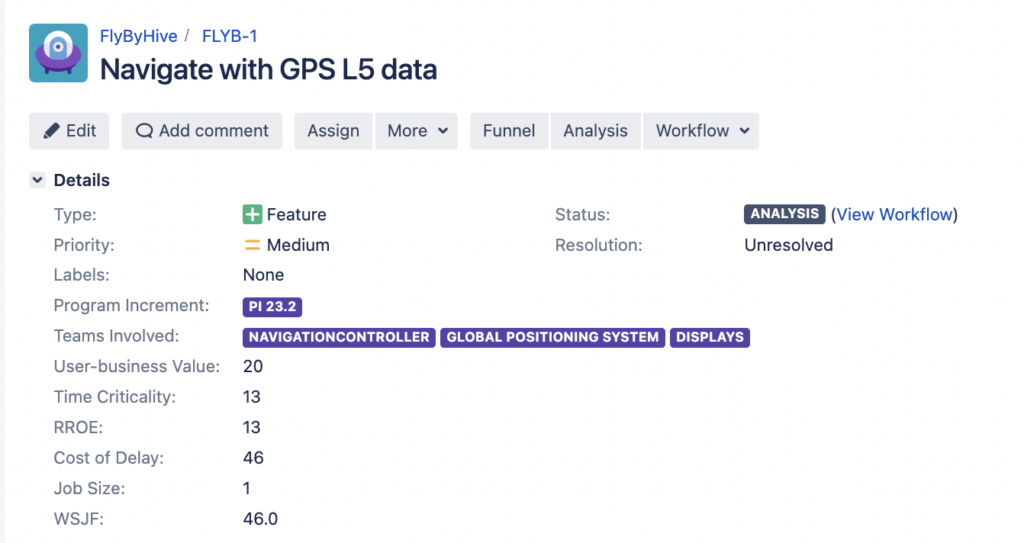
Now as the PI execution progresses, Agile Hive gives us a view of progress of each Feature, summarized on the ART/Program Report:

Product Management as well as the Product Owners for each team can easily see the team contributions to progress of the ART-level Features and Enablers. The higher-level view makes understanding progress, areas to explore for improvements needed, as well as ability to respond to changes needed all more expedient and reliable.
A Few Final Words
Imagine that you, as an individual, need to assemble a complex piece of furniture. You need to obtain a parts list and assembly instructions to assemble the piece of furniture quickly and correctly. This furniture analogy emphasizes that even more so is the need for transparency, alignment, and clarity in building complex systems in an organization. With many different parts, many teams participating in construction and assembly, a multitude of stakeholders with different perspectives, as well as the opportunity for learning and adjusting as the work proceeds, complex system development requires digital representation to help drive best outcomes.
Putting the pieces of the solution together to realize the outcomes requires a number of teams and many contributors. Product Management works with the Product Owners of the contributing teams to help ensure that the parts will ultimately integrate and work together to realize the outcomes. Agile Hive provides the “one-stop-shop” for seeing how the work of the various teams is progressing and contributing to the outcomes. The ART can more easily assess and communicate the impact of needed changes than turn to unreliable ad-hoc meetings and one-off conversations.
Agile Hive provides a Single Source of Truth for complex systems development, supporting the critical role of Product Management.
Further Reading
SAFe® – The Pros and Cons for Scaling Agile
Release Train Engineers – Empowered for Greatness with Agile Hive
SAFe® 6.0 Is Upon Us – What’s New?
Agile Hive Implementation Project
In Focus: Who or What is the LACE?
SAFe with Atlassian tools: Agile Hive is a Scaled Agile Platform Partner



